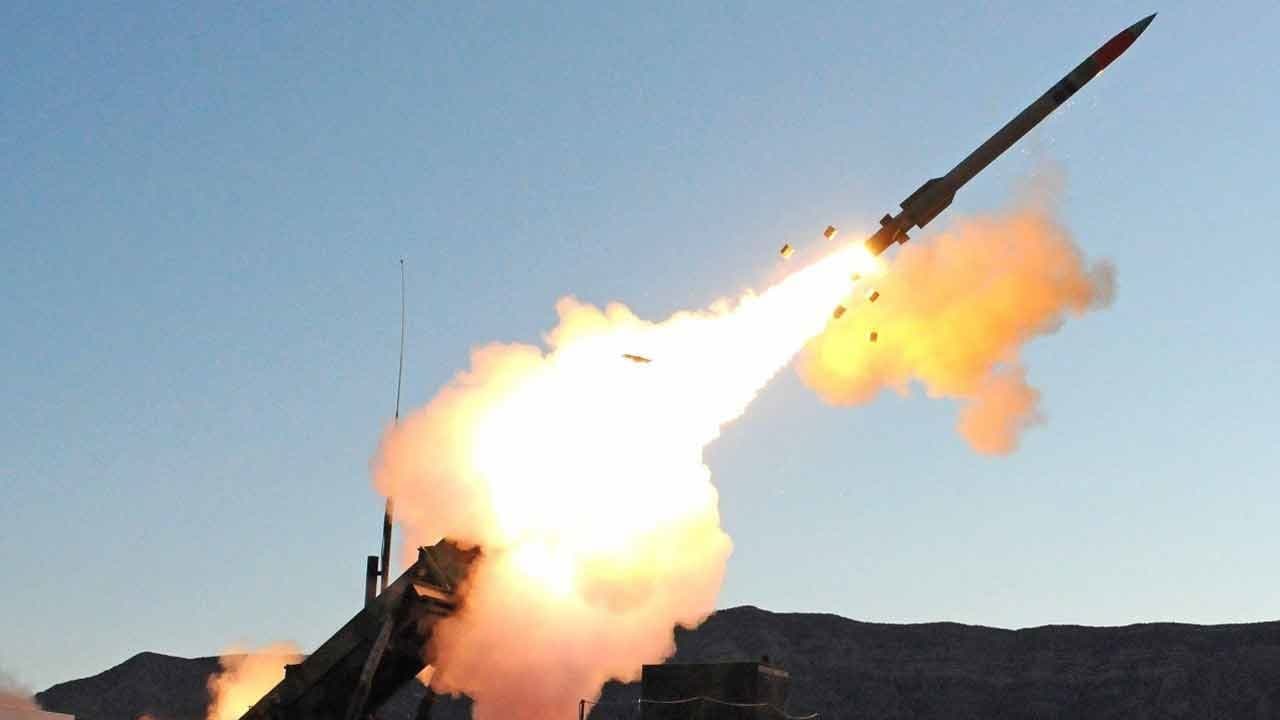Ukrainian President Volodymyr Zelenskyy is traveling to Washington to meet with U.S. President Joe Biden and deliver a speech to Congress on Dec. 21. Zelenskyy will be happy Ukraine is slated to receive a Patriot air defense battery, one of the United States’ most valuable surface-to-air missile systems.
(Subscribe to Our YouTube Channel Here)
The Patriot is highly advanced and can take out targets from long distances. Zelenskyy has been pining for it.
No Quick Fix
Patriot is an acronym for “Phased Array Tracking Radar for Intercept on Target.” The battery can help Ukraine shoot down ballistic missiles, cruise missiles, drones, and fighter planes.
The U.S. military had been reluctant to donate the Patriot system, but Russia’s continued bombing of critical electrical and water infrastructure convinced the Americans to do it.
There are eight truck-mounted launchers for each battery, and the launchers can hold four interceptors. A phased array radar is included in the battery, and a control station with a computerized fire control system and various generators powers the Patriot. Some 90 soldiers maintain the battery, but three soldiers can operate the fire control unit.
Ukrainian personnel will train in Germany for its operation.
The Patriot will not be ready for awhile. It takes a long time to deliver the system and prepare soldiers to fire it, and all told it might be 10 months before the Patriot is operational in Ukraine.
The United States had previously sent Patriot batteries to Poland, Iraq, and Saudi Arabia. Among other customers, Germany, Japan, and Israel have bought the system.
The Patriot system has been in use since Operation Desert Storm. More recently it has operated in the conflict in Yemen, where it intercepts ballistic missiles fired by Iran-backed Houthi rebels.
Patriots Are Effective and Not Cheap
The Patriot radar and target tracking system can handle a maximum of 50 bogeys at once that are flying up to 62 miles away. Once the target is within some 9 miles, the interceptor launches and streams toward the enemy missile or aircraft. The missiles have a high fragmentation warhead that weighs almost 200 pounds.
Newer PAC-3 interceptors operate under a “hit to kill” mode rather than fragmentation.
Patriots are made by Raytheon. They were originally meant to take out airplanes, but the batteries were modified in the 1980s to handle ballistic and cruise missiles as well. The launchers cost around $10 million each, and the interceptors are $4 million.
The Patriot is much more advanced than the HAWK air defenders the United States has previously donated to Ukraine.
The expense of the Patriot interceptors likely means that the Ukrainians will save them for use against ballistic and cruise missiles, rather than targeting the Iran-made drones and loitering munitions that are being used against Ukraine’s civilian infrastructure.
“Firing a million-dollar missile at a $50,000 drone is a losing proposition,” said Mark Cancian, a senior analyst from the think tank CSIS, who was interviewed by the Associated Press.
A Boost to Defenders
The Patriot battery will likely be deployed around Kyiv, but any single battery will only be able to protect a small part of the city. Patriots are usually deployed in a battalion of four batteries that allows for better coverage.
Their delivery and operability will not be immediate, and Kyiv and other cities need protection now.
But this is also a symbolic gesture that shows how the West, and particularly the United States, is willing to send its best military hardware to thwart Moscow’s ambitions.
More: MAGA Needs To Move on From Donald Trump
More: Would Putin Dare Use Nuclear Weapons in Ukraine?
More: Putin’s War Machine Won’t Fight in Ukraine?
Author Expertise and Experience
Serving as 19FortyFive’s Defense and National Security Editor, Dr. Brent M. Eastwood is the author of Humans, Machines, and Data: Future Trends in Warfare. He is an Emerging Threats expert and former U.S. Army Infantry officer. You can follow him on Twitter @BMEastwood. He holds a Ph.D. in Political Science and Foreign Policy/ International Relations.

